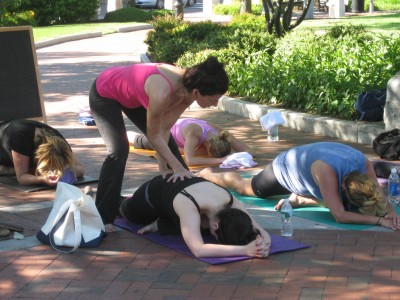
We’re into the final chapter in my blog tour of my soon to be released book, “Stretched: Build Your Yoga Business, Grow Your Teaching Techniques.” I hope the book will be done this week (I’m still working with Amazon on the cover and lining up the picture correctly). This chapter is called “Teaching Students with Injuries and Specific Medical Conditions.” It’s one of the longer chapters and one that’s meant to give you some of the basic things to consider when working with someone that falls into this category.
Let me start out by emphasizing that as a yoga teacher we are not doctors. We are meant to listen, offer yoga practice, including specific modifications that might help the person access the pose but we are not meant to treat anyone from a medical perspective. There is no doubt that the practice of yoga has a medical affect on the body in terms of all the systems of the body (musculoskeletal, circulatory, respiratory as well as others). However, our role is to work in conjunction with medical professionals to be part of an overall plan to assist someone who is injured or ill. Some of my most memorable and deep teaching experiences have been in my work with private students who are also seeing a medical professional. We work together as a team to craft a plan to assist the client.
I start the chapter out with some general considerations around this idea of working with an injured student or someone with a medical condition. As a teacher, there is no way you can know about every student that comes to class and in fact, many times students come to class with medical conditions but they are unaware of the ways in which yoga will affect their condition. I start out by giving you several tips for managing this in a group environment.
I then give you some very general tips for working with someone one on one that has a medical condition of some kind, is generally deconditioned or is injured in some way. Please know that this is just a general approach but it is meant to be something that is very supportive and accessible. I go through several aspects of the practice from Sun Salutations through to Backbends, providing tips that can be customized for individual students.
The chapter will give you additional general tips that can be applied to people with certain specific conditions as well. Keep in mind, again, these are suggestions and are not meant to be prescriptions. Working with students with medical conditions and injuries of all kinds is the best way to learn. This doesn’t mean you want to be learning “on” your students but it’s a great way to get  more information beyond what you already know.
Next Up: Forms, Spreadsheets and Tracking Forms.
